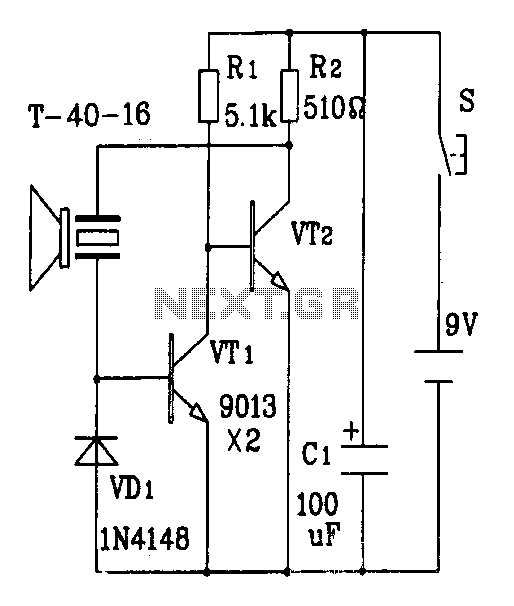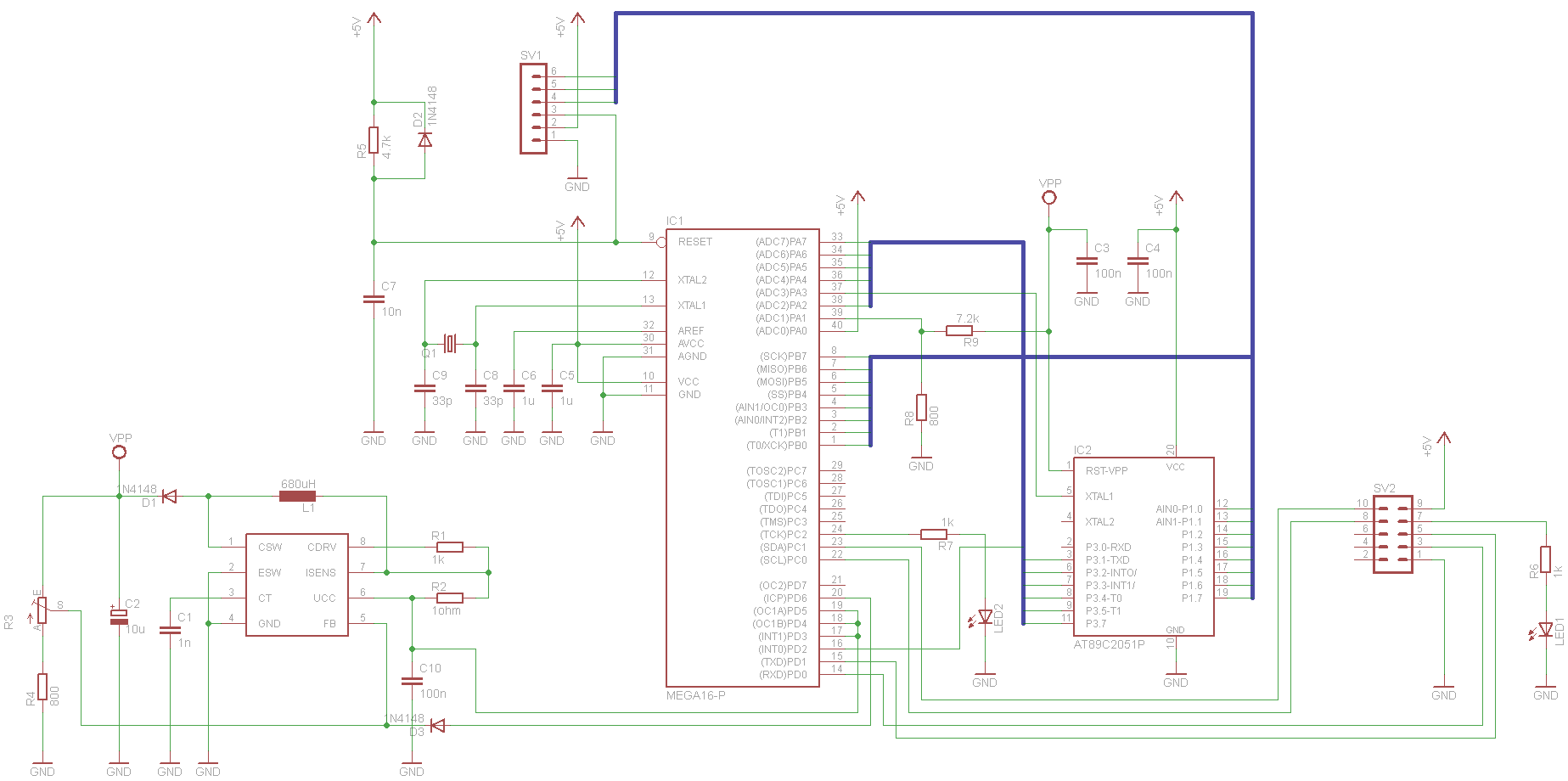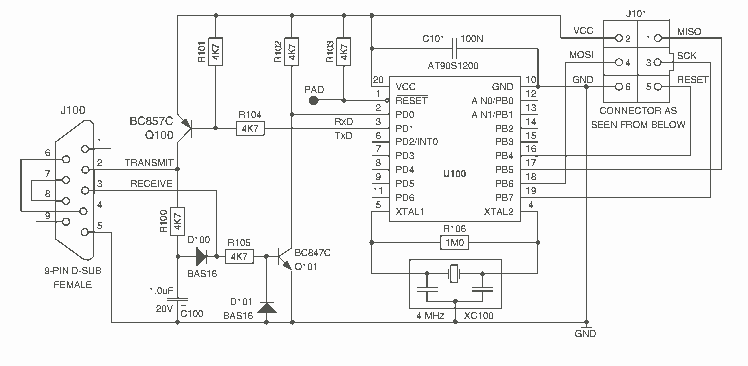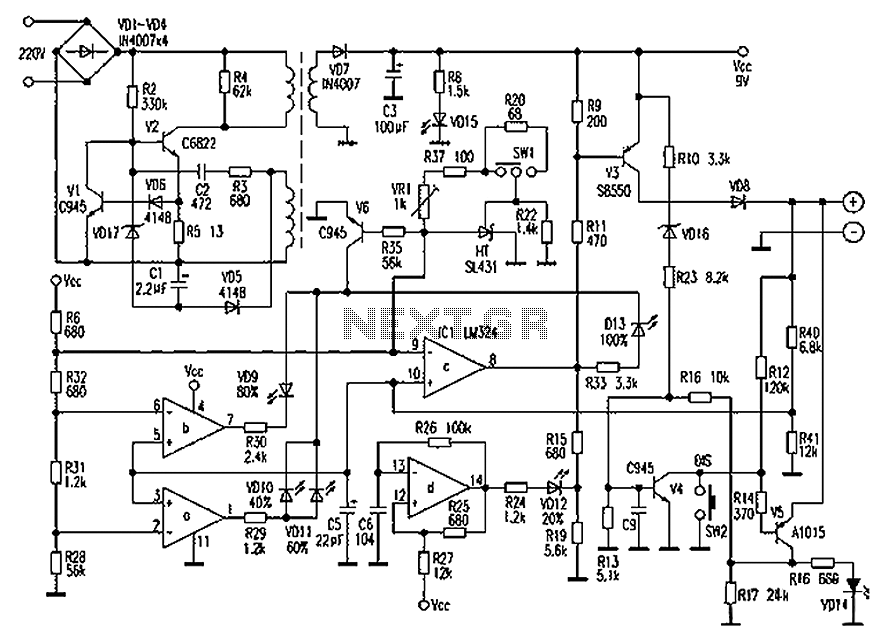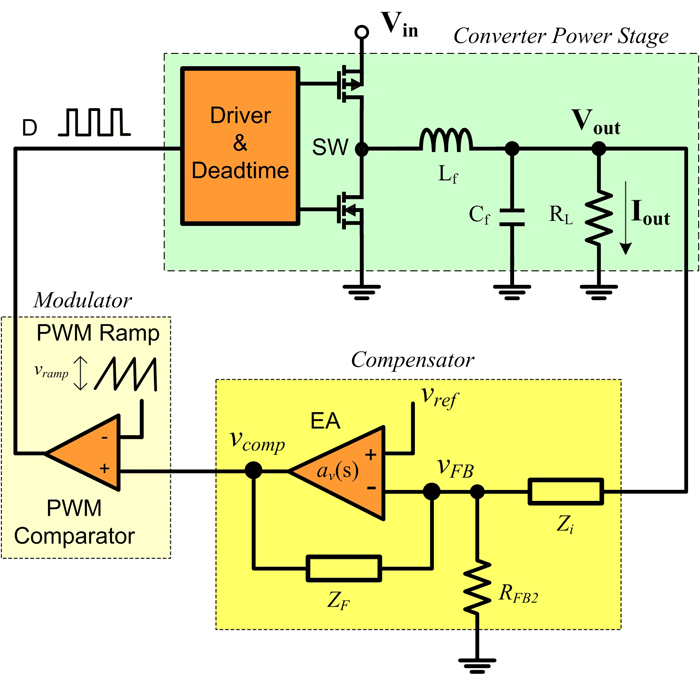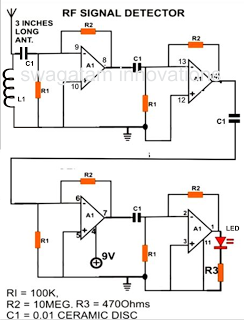
SPMC65P2408A application in one pair of mic identification directions
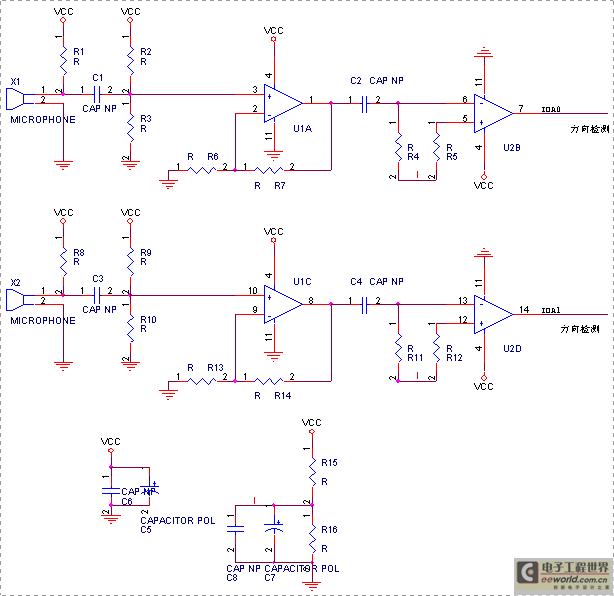
The hardware primarily focuses on sound amplification. When the sound reaches a sufficient level, it can be measured and sent to a microcontroller. The hardware structure is illustrated in Figure 1-1 and consists mainly of a CPU, an analog circuit, and a display circuit. The analog circuit is responsible for amplifying sound, while a revealing LED board indicates the current sound direction state. The schematic diagram is divided into three main sections. On the left is the microphone recording circuit, where the microphone signal is blocked by a capacitor and then reaches the intermediate amplification circuit. After amplification, the signal is sent to the right circuit, where it is compared and output through the I/O port of the microcontroller. The SPMC2408A is an 8-bit microcontroller developed by a specific company, utilizing the SPMC65 CPU as its core. It supports local operation commands and features strong timing capabilities, various functions such as counters, multiple external interrupt sources, ADC, PWM, and standard communication interfaces. It is suitable for general applications, computer peripheral control, and electrical home appliances. The SPMC2408A is available in two packaging options with 28 and 32 pins, with the 32-pin version including a UART function. The design initially chose the 28-pin package, as shown in Figure 3-1.
The schematic representation of the sound amplification hardware includes a structured layout that facilitates the processing of audio signals. The left section, featuring the microphone recording circuit, is crucial for capturing sound waves. The microphone converts acoustic energy into an electrical signal, which is then filtered through a capacitor to block any DC offset, ensuring that only the AC component of the sound is amplified. This filtered signal is routed to the intermediate amplification circuit, where it undergoes further amplification to achieve the desired signal strength.
The right section of the schematic is dedicated to signal processing and comparison. Once the signal is amplified, it is sent to a comparator circuit that assesses the amplitude against a predefined threshold. If the signal exceeds this threshold, it is then exported through the I/O port of the SPMC2408A microcontroller, allowing for further processing or control actions based on the sound level detected.
The SPMC2408A microcontroller is a critical component of this system, providing the necessary computational power to manage the audio signals and execute control commands. With its 28 or 32-pin configurations, it allows for flexibility in design and integration into various applications. The inclusion of features such as ADC (Analog to Digital Converter) facilitates the conversion of the amplified analog signal into a digital format, enabling more complex processing tasks. Additionally, the PWM (Pulse Width Modulation) capability offers a means to control output devices based on the processed audio signals, making this microcontroller an excellent choice for applications in audio processing, home automation, and peripheral control systems. The robust design and functionality of the SPMC2408A make it suitable for a wide range of electronic applications, enhancing the overall performance of the sound amplification hardware.The part of the hardware mainly finishes the magnification of sound, when the sound is enough large, have measured on can lead this signal into the one-chip computer ing. The hardware makes up the frame picture and is shown by 1-1. Mainly made up of CPU, analogous circuit and display circuit. The analogous circuit is used in the sound to enlarge, reveal led board can reveal the present sound direction state. In the schematic diagram, divided into three parts altogether, on the left is mic recording circuit, mic signal is after the electric capacity is block, reach the intermediate amplifying circuit, the signal after amplifying reaches the circuit of right, after comparing, export on I/O mouth of the one-chip computer. SPMC2408A is insulted 8 technical grade one-chip computer that the open company designs developing, regards SPMC65 CPU as the core, support the operation order in the location.
Have strong timing / many kinds of functions such as counter, abundant outside interrupt source and ADC, PWM, standard communication interface. Suitable for common worker`s accusing of occasion, computer peripheral control and electrical home appliances, etc.
SPMC2408A has 28 base pins and 32 base pins and two kinds of capsulation, 32 base pins have capsulated UART function more. Originally design choosing 28 base pins to capsulate, as shown in Fig. 3-1. The part of the hardware mainly finishes the magnification of sound, when the sound is enough large, have measured on can lead this signal into the one-chip computer ing.
The hardware makes up the frame picture and is shown by 1-1. Mainly made up of CPU, analogous circuit and display circuit. The analogous circuit is used in the sound to enlarge, reveal led board can reveal the present sound direction state. In the schematic diagram, divided into three parts altogether, on the left is mic recording circuit, mic signal is after the electric capacity is block, reach the intermediate amplifying circuit, the signal after amplifying reaches the circuit of right, after comparing, export on I/O mouth of the one-chip computer.
SPMC2408A is insulted 8 technical grade one-chip computer that the open company designs developing, regards SPMC65 CPU as the core, support the operation order in the location. Have strong timing / many kinds of functions such as counter, abundant outside interrupt source and ADC, PWM, standard communication interface.
Suitable for common worker`s accusing of occasion, computer peripheral control and electrical home appliances, etc. SPMC2408A has 28 base pins and 32 base pins and two kinds of capsulation, 32 base pins have capsulated UART function more.
Originally design choosing 28 base pins to capsulate, as shown in Fig. 3-1. 🔗 External reference
The schematic representation of the sound amplification hardware includes a structured layout that facilitates the processing of audio signals. The left section, featuring the microphone recording circuit, is crucial for capturing sound waves. The microphone converts acoustic energy into an electrical signal, which is then filtered through a capacitor to block any DC offset, ensuring that only the AC component of the sound is amplified. This filtered signal is routed to the intermediate amplification circuit, where it undergoes further amplification to achieve the desired signal strength.
The right section of the schematic is dedicated to signal processing and comparison. Once the signal is amplified, it is sent to a comparator circuit that assesses the amplitude against a predefined threshold. If the signal exceeds this threshold, it is then exported through the I/O port of the SPMC2408A microcontroller, allowing for further processing or control actions based on the sound level detected.
The SPMC2408A microcontroller is a critical component of this system, providing the necessary computational power to manage the audio signals and execute control commands. With its 28 or 32-pin configurations, it allows for flexibility in design and integration into various applications. The inclusion of features such as ADC (Analog to Digital Converter) facilitates the conversion of the amplified analog signal into a digital format, enabling more complex processing tasks. Additionally, the PWM (Pulse Width Modulation) capability offers a means to control output devices based on the processed audio signals, making this microcontroller an excellent choice for applications in audio processing, home automation, and peripheral control systems. The robust design and functionality of the SPMC2408A make it suitable for a wide range of electronic applications, enhancing the overall performance of the sound amplification hardware.The part of the hardware mainly finishes the magnification of sound, when the sound is enough large, have measured on can lead this signal into the one-chip computer ing. The hardware makes up the frame picture and is shown by 1-1. Mainly made up of CPU, analogous circuit and display circuit. The analogous circuit is used in the sound to enlarge, reveal led board can reveal the present sound direction state. In the schematic diagram, divided into three parts altogether, on the left is mic recording circuit, mic signal is after the electric capacity is block, reach the intermediate amplifying circuit, the signal after amplifying reaches the circuit of right, after comparing, export on I/O mouth of the one-chip computer. SPMC2408A is insulted 8 technical grade one-chip computer that the open company designs developing, regards SPMC65 CPU as the core, support the operation order in the location.
Have strong timing / many kinds of functions such as counter, abundant outside interrupt source and ADC, PWM, standard communication interface. Suitable for common worker`s accusing of occasion, computer peripheral control and electrical home appliances, etc.
SPMC2408A has 28 base pins and 32 base pins and two kinds of capsulation, 32 base pins have capsulated UART function more. Originally design choosing 28 base pins to capsulate, as shown in Fig. 3-1. The part of the hardware mainly finishes the magnification of sound, when the sound is enough large, have measured on can lead this signal into the one-chip computer ing.
The hardware makes up the frame picture and is shown by 1-1. Mainly made up of CPU, analogous circuit and display circuit. The analogous circuit is used in the sound to enlarge, reveal led board can reveal the present sound direction state. In the schematic diagram, divided into three parts altogether, on the left is mic recording circuit, mic signal is after the electric capacity is block, reach the intermediate amplifying circuit, the signal after amplifying reaches the circuit of right, after comparing, export on I/O mouth of the one-chip computer.
SPMC2408A is insulted 8 technical grade one-chip computer that the open company designs developing, regards SPMC65 CPU as the core, support the operation order in the location. Have strong timing / many kinds of functions such as counter, abundant outside interrupt source and ADC, PWM, standard communication interface.
Suitable for common worker`s accusing of occasion, computer peripheral control and electrical home appliances, etc. SPMC2408A has 28 base pins and 32 base pins and two kinds of capsulation, 32 base pins have capsulated UART function more.
Originally design choosing 28 base pins to capsulate, as shown in Fig. 3-1. 🔗 External reference
